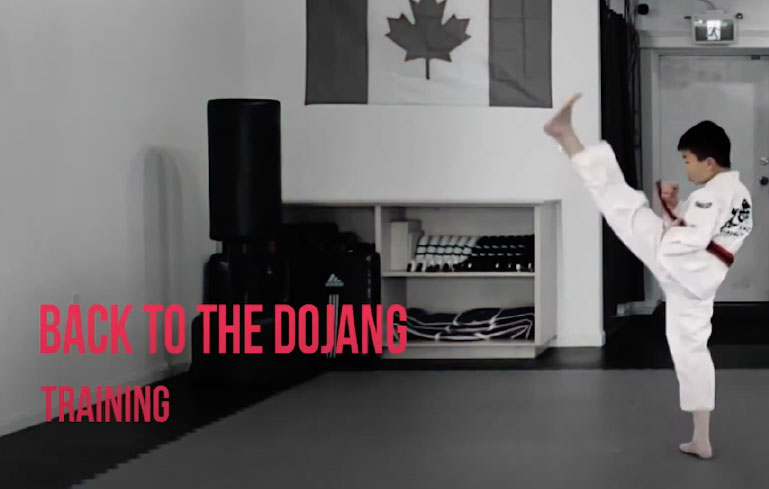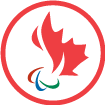| Follow #Backtothedojang on:Taekwondo Canada on FacebookTaekwondo Canada on TwitterTaekwondo Canada on InstagramTaekwondo Canada on Youtube | SHARE YOUR PHOTOS & VIDEOS WITH US! Tag your club and include #BackToTheDojang |
Return to Sport
COVID -19 Return to TRAIN in the Dojang Recommendations (May 2020):
NOTE: THIS IS NOT A RETURN TO COMPETITION DOCUMENT. ( Click here for PDF version)
AT THIS TIME, THERE IS NO TIMELINE ON WHEN COMPETITION WILL RESUME OR WHAT IT WILL LOOK LIKE. TAEKWONDO CANADA WILL CONTINUE TO MONITOR THIS AND WILL PUBLISH GUIDELINES AS APPROPRIATE
PLEASE REVIEW THIS DOCUMENT PRIOR TO RESUMPTION OF TRAINING OF ANY KIND.
Note: Different regions have been affected differently with COVID-19 and will have unique policies regarding gatherings of individuals that will ultimately determine how group training will resume.
This document does not supersede any provincial guidelines or health orders. Every individual club owner must follow the provincial and health authorities.
Key Risks
• Taekwondo training is typically completed indoors which increases risk.
• Taekwondo classes typically include members from multiple households.
• Poomsae is a non-contact sport when performed individually; however, team poomsae may involve contact during freestyle routines or training and should not be trained at this time.
• Kyorugi is a contact sport and therefore at a high risk of droplet transmission. There must not be sparring at this time. However, competition drills which maintain physical distancing, are non-contact, and are not using handheld targets or kicking shields are permitted.
ALL CONTACT MUST BE AVOIDED IN ORDER TO MAINTAIN PHYSICAL DISTANCING
STEP 1: FOLLOW YOUR PROVINCIAL GUIDELINES
This document is NOT meant to replace your provincial guidelines. This document is meant to enhance Taekwondo specific return to training protocols that are recommended to ensure a safe and healthy return to training environment.
Recommendations:
a) Be familiar with the latest requirements and orders of your provincial government and public health authorities.
b) Communicate with your provincial health and government representatives if you are unclear about a regulation.
STEP 2: THINKING ABOUT DECISION-MAKING
• Identify decision-makers. Who is responsible for decision-making in your business/service setting?
• Age groups? How can you maintain physical distancing with each age group?
• Do you have a health and safety plan that would apply to situations including epidemic/pandemics?
• Assign responsibility for the development, implementation, and monitoring of your operational plan. Who will be responsible for implementing and monitoring the operational plan? Will this be a shared task?
• Where will your plan be posted and how will this be communicated to your members and students?
Recommendations:
a) Have a clear communication that is posted on your doors, website, social media and is emailed directly to students and members
b) Be clear with everyone who is making final decisions and how they will be enforced
c) Be clear with everyone about the schedule, who may attend on what days, how attendance will be recorded and by who and ensure up to date contact information for anyone coming to the dojang (to facilitate contact tracing if needed).
d) Allow sufficient time between classes to facilitate physical distancing and ample time for cleaning and disinfecting of surfaces and areas. Check for approved products recommended by Health Canada. Government websites provide information ex https://www.canada.ca/en/health-canada/services/drugs-health-products/disinfectants/covid-19.html
STEP 3: IDENTIFYING RISKS AND SOLUTIONS
• Evaluate the physical setting(s) of your business/service. Make a list of your unique locations (e.g., entrance, staff room, areas where patrons frequent, outdoor spaces where people congregate, washrooms, eating areas, etc.).
• Evaluate how staff and patrons navigate through your setting and how your services/products are offered and accessed.
• Evaluate the inter-personal interaction(s) of your business/ service: Consider how many people interact in the daily operation of your business/service (staff and customers/patrons) and how closely these people come into physical proximity of one another.
• Evaluate whether your business/service interacts with people who are at higher risk from COVID-19 (older adults, immunocompromised, those with chronic health conditions).
• Use this information to better protect those who are more vulnerable to COVID-19, but do not discriminate or force the sharing of personal health information.
Recommendations:
a) Assign one owner/staff member as responsible for: Screening process and venue cleaning schedule
b) CLEANING SCHEDULE SHOULD INCLUDE DISINFECTING OF THE TRAINING AREA FLOOR FREQUENTLY AND AT A MINIMUM ON A DAILY BASIS. Spot cleaning should occur anytime anyone has touched the floor, or if you see/believe that there was sweat or droplets that would have touched the floor.
c) If possible, training outdoors is preferred to indoors.
d) Consider the use of ongoing virtual classes.
e) Training numbers should be limited to the number of staff/ instructors/ students you can fit into your training space while ensuring proper physical distancing. For example, if students are provided a designated 2-mx2-m (6-ft x 6-ft) square for training, there should also be a 1-m (3-ft) space between their training box and another person’s training box next to them on all sides.
f) Regardless of the size of the space, classes should be limited to numbers which respect the physical distancing requirements needed within the training space and are approved by each provincial government.
g) Drop offs and pickups should be staggered to avoid congestion at the doors.
h) When possible, have one door for entry and one door for exit.
i) Spectators should not be allowed (or be greatly minimized if space allows) to ensure the interaction and space requirements are being respected.
STEP 4: CREATING SCHEDULES AND PROCESSES FOR BEFORE AND AFTER CLASS
Consider developing schedules and processes to help make sure implementation and ongoing monitoring take place.
Guiding questions to consider:
• Are you able to create a daily checklist to monitor that your plan is in place and functioning?
• Are you able to follow-through on the solutions you identified to reduce your risks?
• Would developing or adapting an existing cleaning and disinfection checklist and schedule help to keep you on track with your efforts to address the public health measures in your setting?
• What should your draft client communication look like? Should a client or staff contract COVID-19, immediately call your local public health authority. Follow any and all recommendations by public health. Communicate the process used to mitigate the risk to all potentially affected.
• What additional supply/inventory or process checklists may be helpful?
Recommendations:
a) Hand sanitizer (with a minimum of 60% alcohol) should be provided and be required to be used before entering the building, and before and after using the washrooms and in the training area.
b) Everyone who is entering the building will complete a COVID 19 health assessment. These are available online through most provincial governments found at https://ca.thrive.health/covid19/en.
i) Students who screen negative can proceed to the training area directly
ii) Students who do not screen negative should contact their local health authorities and will not be permitted into the training area and should be asked to leave immediately.
ii) No students with a cough, fever, or who otherwise appear sick should be permitted to enter the building.
e) Should a student show symptoms during class, it is recommended the class be ended immediately and the student be asked to leave. Following this, instructors should contact their public health authority immediately for direction and no further classes should be run that day.
f) Everything that is touched by hands is disinfected immediately after touching including door handles, washrooms etc. Every effort should be made to not have Approved and adopted – May 2020 6 people touching surfaces. A document with cleaning schedule and the initials of who completed the cleaning should be maintained.
g) Markings should be placed on the floor to delineate personal training spaces, where participants can line up, and in any other area needed to ensure physical distancing rules are respected.
h) Changerooms should not be used. Students should come ready for class. Students may wear a tracksuit over their uniform to keep this clean if they wish.
i) Students should be reminded to use washrooms at home prior to coming to limit the use of the washrooms at the dojang. Washrooms should have disposable towels to improve hygiene.
j) Students should bring individual water bottle for personal use which is filled prior to coming to training.
STEP 5: DURING CLASS
Guiding questions to consider:
• What can you do during class to maintain physical distancing?
• What can you do to prevent interaction with equipment?
• What can you do to ensure proper hygiene?
• Where are you going to keep copies of your operational plan to have it ready for staff to refer to for guidance? This way it will also be readily available for potential spot checks when necessary.
Recommendations:
a) Handheld kicking targets and kicking shields should not be used. They cannot be used with a proper 6ft (2m) distancing.
b) Wavemaster or other freestanding equipment may be used but should be disinfected between participants. The individual cleaning the equipment should wear gloves and use sanitizing products such as those with Isopropanol 17.2 % with ammonium chloride. For example, Lysol Disinfectant Spray.
c) Classes are recommended to be done in footwear- it is suggested that this be clean indoor footwear (preferably Taekwondo shoes). Students should not train in socks as they are slippery unless they have appropriate grip.
d) Touching the floor with one’s hands should be avoided when possible and, if unavoidable, both the immediate area that is touched and one’s hands should be cleaned immediately after the floor is touched.
e) Masks are not a replacement for physical distancing and are also ineffective when wet. If your province requires masks, it is recommended to ensure students have Approved and adopted – May 2020 7 an ample supply to ensure they are using a dry well-fitting mask. Masks must be put on and off properly. Please review the following: https://www.canada.ca/en/public-health/services/diseases/2019-novelcoronavirus-infection/prevention-risks/how-put-remove-clean-non-medicalmasks-face-coverings.html
f) Yelling should be avoided- this increases the likelihood of spreading germs. No kihaps or singing as this increases droplet formation and area of spread.
g) No handshakes, high fives or other contact should be made between individuals.
h) Sparring and any other contact activities MUST be completely avoided.
i) Where possible training outdoors while maintaining physical distancing is preferred over indoor training during intense physical activity.

1) https://ca.thrive.health/covid19/en
2) https://www.canada.ca/en/health-canada/services/drugs-healthproducts/disinfectants/covid-19.html
3) https://www.canada.ca/en/public-health/services/diseases/2019-novel-coronavirusinfection/prevention-risks/about-non-medical-masks-face-coverings.html
4) https://www.canada.ca/en/public-health/services/diseases/2019-novel-coronavirus-infection/prevention-risks/how-put-remove-clean-non-medical-masks-face-coverings.html
























